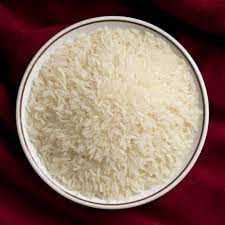In more than100 countries, rice is an important nutritional source that is served with a variety of flavorful dishes. Jasmine rice, also known as Thai fragrant rice, is an aromatic “long-grain” rice where each grain is four times longer than its width.

Jasmine rice is found in many colors. White jasmine rice, in particular, is largely processed and has high nutritional values than white rice than to brown jasmine rice. Jasmine rice is found in black, purple, and red varieties, each with slightly different nutritional profiles. Be sure to go through the nutritional label of the jasmine rice you’re cooking for the most accurate nutritional information.
Adding jasmine rice to your diet will offer you health benefits. However, there are also a few risks that you should watch out for.
Jasmine Rice Nutrition Information
One ¼ cup serving of brown jasmine rice contains:
Calories: 160
Fat: 1 gram
Cholesterol: 0 grams
Sodium: 0 grams
Carbohydrates: 35 grams
Fiber: 2 grams
Sugar: 0 grams
Protein: 3 grams
brown jasmine rice is rich in nutrients , including vitamin B1, vitamin B6, magnesium, phosphorus, selenium, and manganese liike most whole grain rice.
| Long-grain white rice | Jasmine rice | |
| Calories | 160 | 181 |
| Protein | 4 grams | 4 grams |
| Fat | 0 grams | 1 gram |
| Carbs | 36 grams | 39 grams |
| Fiber | 1 gram | 1 gram |
| Calcium | 2% of the Daily Value (DV) | 2% of the DV |
| Iron | 0% of the DV | 2% of the DV |
Potential Health Benefits of Jasmine Rice
As rice is a staple food in many countries, scientists have focused a lot of energy on researching how different rices affect the human body.
Jasmine rice health benefits :
Improved Immune System
Colorful varieties of jasmine rice, including red, purple, and blue, are packed with phytonutrients. Phytonutrients help protect your body’s cells, improving your immune system and overall health.
Promotes Healthy Pregnancy
Jasmine rice is packed with folic acid. Folic acid has been assumed to promote healthy pregnancies, especially when taken before pregnancy and within the first trimester. Regular folic acid intake has been associated with reduced levels of birth defects and neural tube defects. This makes jasmine rice a healthy food while trying to conceive and during pregnancy.
Supports Digestive Health
Brown jasmine rice has a higher fiber content than white jasmine rice. Brown rice is less processed which means that fiber and nutrients remain intact. Dietary fiber normalizes bowel movements and helps maintain your digestive health.
Potential Risks of Jasmine Rice
Despite being a staple food in many cultures, eating jasmine rice does have some risks. Risks associated with this rice include:
Blood Sugar Spikes
Like all rices, jasmine rice is relatively high on the glycemic index. Even brown jasmine rice can cause your blood sugar levels to spike, which may cause complications for people with Type II diabetes.
Arsenic Levels
Arsenic is a toxic heavy metal found in soil, rock, and water and arsenic builds up in rice at 10 times the rate it builds up in other grains since rice is grown in water-flooded fields. The Food and Drug Administration (FDA) currently does not have a limit on how much arsenic can be in foods, meaning arsenic levels can be built up quickly without consequence to the sellers. This can be especially dangerous to children. To reduce the amount of arsenic in your rice, be sure to wash the rice thoroughly before cooking it.
Healthier Alternatives
Brown jasmine rice or colored jasmine rice varieties are healthy alternatives to white jasmine rice. However, these options aren’t the most healthy grains you can choose. Other grains that have lower arsenic levels while still providing key nutrients to your body include quinoa, millet, bulgur, amaranth etc